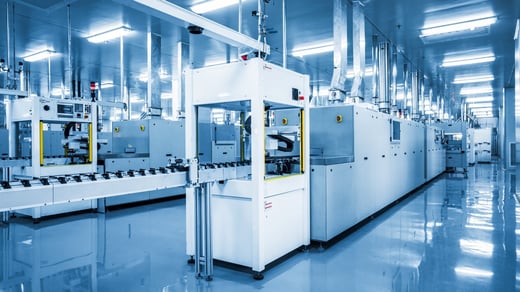
Solving heat-sealing challenges around new sustainable packaging materials
Many companies are seeking to shift towards recyclable or biodegradable packaging materials, yet the process is often complex. We guided our client through this transformation, resulting in innovative and sustainable packaging solutions
We have been involved in a number of projects in recent years where clients have had a urgent need to move away from non-recyclable packaging materials in response to both regulatory requirements, such as the forthcoming PPWR directive, or to align with new customer expectations.
But such packaging material changes are rarely straightforward, with many important aspects of material performance and manufacturing process compatibility that need careful consideration.%20(1).webp?width=730&height=487&name=shutterstock_2194739681%20(2)%20(1).webp)
New materials and heat-sealing
For the materials themselves, the move from mixed-material laminate structures to mono-material laminates does indeed provide a route to achieving recyclable packaging, in particular for flow-wrapped and vertical-fill-form-and-seal (VFFS) packaging.
But the heat-sealing characteristics of such new materials can be quite different to conventional laminates, most notably being far more demanding of tighter control of heat sealing parameters (temperature, pressure and dwell time).
This inevitably leads to the realisation that current manufacturing processes are inadequately controlled, and possibly not fully understood, potentially leading to poor quality or defective pack sealing when the new materials are introduced.
In particular, legacy heat-sealing machinery often doesn’t have the precise temperature control that is required to reliably seal mono-materials (without damaging them), because they were originally only intended to process mixed-material laminates. However, in most cases it is possible to upgrade legacy machines to make them compatible with mono-material laminates.%20(1).webp?width=730&height=462&name=shutterstock_1659346291%20crop%20(1)%20(1).webp)
First, some analysis
The first critical step is to understand which are the important process parameters to monitor and control. This can be informed by a combination of analytical approaches, including experimentation, modelling and simulation.
The next critical step is to assess how well the critical parameters are currently controlled by the heat-sealing machinery, possibly by adding appropriate sensing technologies in the right locations to accurately monitor the critical parameters.
For any critical parameters that aren’t sufficiently controlled, the final step will be to improve the control. This could be as simple as using the new sensors (from the previous step) in the machine’s existing control loop. However, it might also require the development of new algorithms or new hardware to process the data, among other solutions.%20(1).webp?width=730&height=487&name=shutterstock_1201686265%20(2)%20(1).webp)
Improving the monitoring and control of the critical parameters doesn’t just ensure good seal integrity, it also provides a robust quality-inspection and quality-control capability. This further ensures that defective or poor quality packs do not find their way into the supply chain.
42T has successfully supported many of our clients in making this journey, leading to evolved or new packaging solutions that deliver against their recycling or biodegradability needs.
Says Stuart Gilby, Director of Food & Beverage at 42T, “It has been particularly satisfying to have been able to help our client achieve their packaging sustainability aims through the combination of 42T’s practical engineering approach combined with a deep understanding of the theoretical aspects of material heat-sealing.”
Heat-sealing experts
To illustrate this, Stuart outlines what we have been doing for our clients.
"We helped clients to firstly establish a comprehensive understanding of the critical parameters to measure and control their heat-sealing processes.
We've also developed precision sensing and monitoring solutions for use in R&D and production. And we've been able to support our clients in the transition to fully recyclable packaging solutions."
Advancing the science so everyone benefits
Stuart adds, "Our client acknowledged the high level of the team’s expertise and the practical approach taken on all of the projects. They added that achievements on these various challenges well exceeded their expectations and significantly enhanced their understanding.
Furthermore, the work on these projects further developed the know-how within the 42T team in the area of sustainable materials and heat-sealing processes."
By always pushing the limits of possibilities, 42T is proactively contributing to the general pool of knowledge for the kinds of sustainable technologies available which can only benefit industry in future.
If you would like to find out more, contact Director of Food & Beverage, Stuart Gilby :
answers@42T.com | +44 (0)1480 302700 | Stuart Gilby | LinkedIn
Related Articles

Consumer, Personal Care
Resolving dispense failure in a personal care product

Manufacturing & Automation, Industrial
Root-cause identification of manufacturing variability

Manufacturing & Automation, Industrial
Managing risk in high stakes packaging innovation

What will you ask us today?
We believe in asking the right questions to drive innovation; when we know the right questions, we generate the ideas to answer them.


.jpg?width=730&height=487&name=shutterstock_785150659%20(1).jpg)